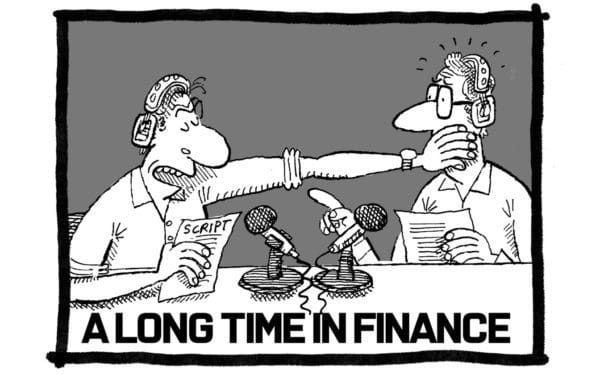A personal view from Ian Stewart, Deloitte’s Chief Economist in the UK. To subscribe and/or view previous editions just google ‘Deloitte Monday Briefing’.
The listed public company has been the favoured form of ownership for large businesses for much of the last 200 years. Equity markets offer a vital source of capital for growing businesses and provide owners with a way of realising value in their businesses.
But in the last 25 years public equity markets have increasingly been challenged by various forms of private ownership.
Soaring equity markets have concealed a decline in the number of listed businesses. Since the peak in 1996 the number of businesses listed in the US has almost halved. The decline in the UK came later and has been less pronounced, but the trend is unmistakable. The stock of UK-listed business has fallen by well over a quarter since the peak in 2006.
Agreed, companies are still raising capital on public markets. Between 2000 and 2017 over $800 billion was raised through IPOs in European markets alone. But this is a fraction of the $5.0 trillion which has left the European equity market through businesses de-listing, divestments and companies buying back their own shares.
Western corporates are generating more cash than they are able to deploy in their businesses. Cash balances have risen to record levels and companies have been buying back their own shares on a grand scale, shrinking the pool of equity. Mergers and acquisitions have reinforced the decline in the number of listed companies.
The Securities and Exchange Commission estimates that US companies raised almost $3 trillion last year through private channels, almost twice the amount raised through IPOs.
What is driving de-equitisation, the shrinking of public equity markets?
In the past listing on a public exchange offered the principal route to new funds for larger businesses. Today there are a host of alternatives. Private equity, sovereign wealth funds, infrastructure funds, family offices and late-stage venture capital all compete with public markets.
Such private buyers command vast firepower. According to the research house Preqin private equity funds alone have almost $2.5 trillion of so-called “dry powder” – capital at their disposal to buy companies, real estate and infrastructure and other assets.
The costs and burdens involved in listing – which include listing fees, quarterly earnings calls and mandatory disclosures – have added to the attractions of the private route. For technology start-ups seeking to safeguard intellectual property, private investors offer patience and a willingness to burn cash. Start-ups now commonly receive multiple funding rounds, providing pre-IPO liquidity for employees and founders.
But a more significant factor in the growth of private markets is simply that debt is cheaper than equity. Ultra-low interest rates and huge injections of capital into the system via quantitative easing have pushed market interest rates to record lows. Robert Buckland, Chief Equity Strategist at Citigroup, estimates that the cost of debt for US companies is around 3.0%, less than half the 7.0% cost of equity.
Private equity’s track record on returns appears to be strong. A 2016 paper by academics at Oxford reports that buyout funds have consistently outperformed public markets. A 2017 white paper from Voya, an independent retirement planning company, found that private equity outperformed the US S&P500 index over the 20-year period between 1996 and 2016.
Such performance has attracted wealth managers and institutional investors to increase their allocations to private equity. In the US the Securities and Exchange Commission is considering changes to give individual investors greater access to the private market.
The optimal form of ownership of businesses has long been debated. But the shrinkage of equity markets testifies to the powerful appeal of private forms of ownership.
PS – We have written previously about intergenerational fairness, highlighting the financial pressures on young people today. A report released last week by the Office for National Statistics challenged some widely-held assumptions about the gap between the generations. It found that while today’s 25-54 year-olds pay more in taxes than they receive in benefits previous generations at the same age were even larger net contributors. The report also found that today’s 55-64 year-olds are far greater net contributors to the Exchequer than previous cohorts of 55-64 year olds.



